Why stay in Kotor
The southernmost fjord in Europe! The largest bay in Europe! The Bay of Kotor, together with the Risan Bay, is a UNESCO World Heritage Site since 1979. According to our opinion, it is undoubtedly the most beautiful city in Montenegro. Its unique scenic beauty makes it one of the top five attractions in Montenegro and is visited by many Adriatic cruise ships.
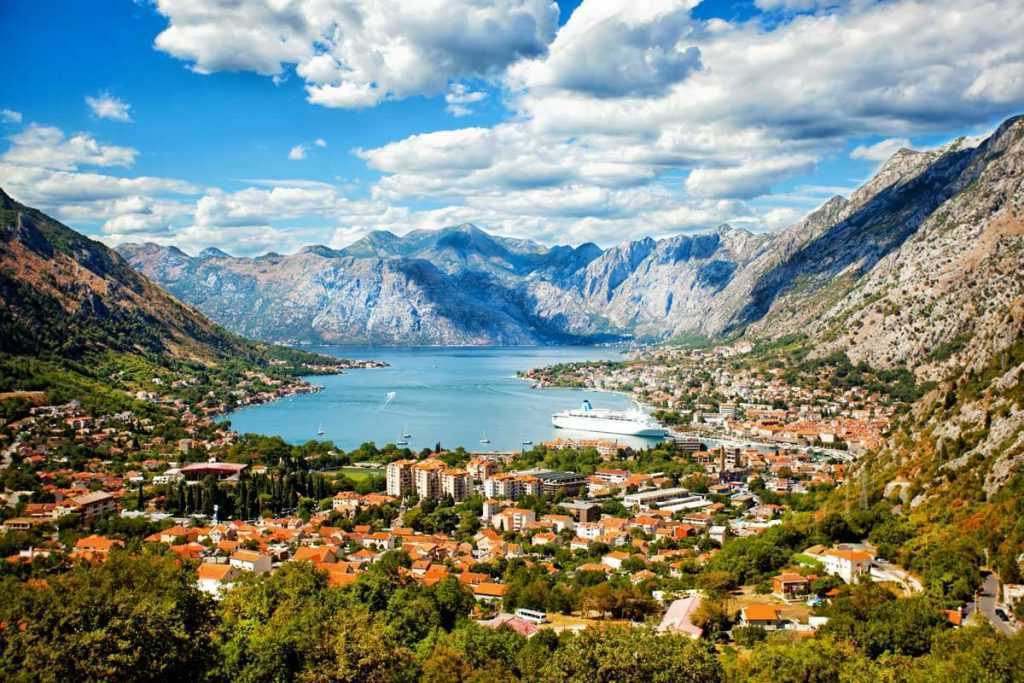
The emerald green Adriatic Sea, the impressive mountains Lovćen, the medieval town with red ceramic roofs stand in stark contrast to the luxury sailing yachts and modern cruise liners anchored in Kotor Port. The Bay of Kotor is nearly 30 kilometers long and consists of four separate basins connected by impressive straits between towering mountain slopes. There are two peninsulas in the bay: Prevlaka, which belongs to Croatia, and the Montenegrin peninsula of Luśtica. In the middle of the bay, about 2 kilometers wide, is the fortified island of Mamula, another defensive fortification.
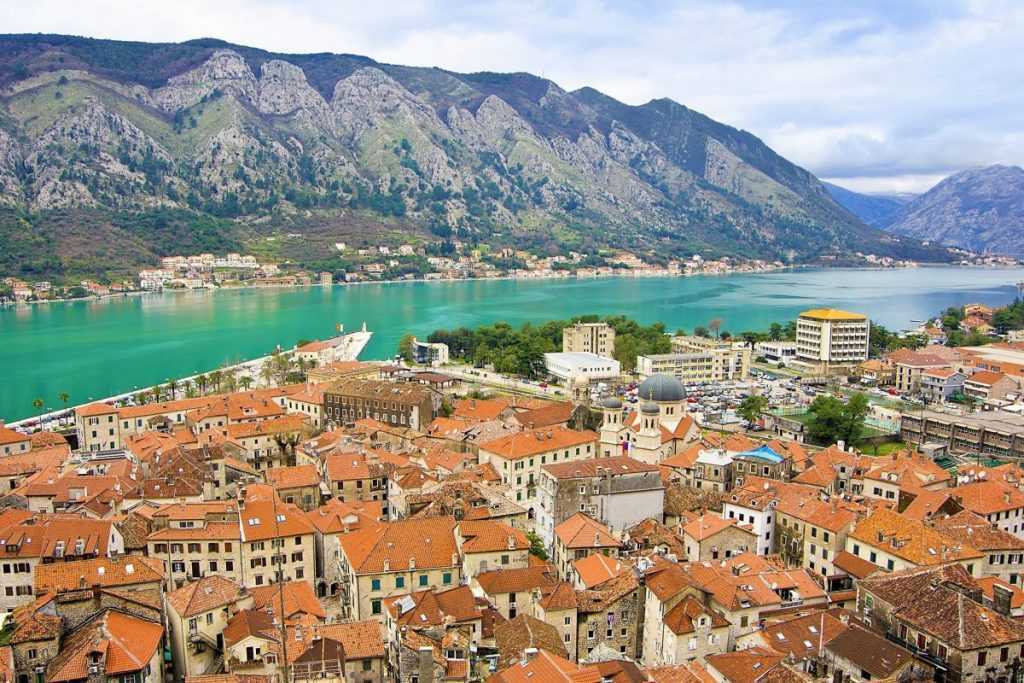
In addition to the remains of Roman buildings, an incredible number of monasteries have been excavated: the Monasteries of Sveti Đorđe on St. George Island near Perast, the Orthodox Monastery of Savina and the Monastery of the Archangel Michael on the Island of Flowers near Tivat are still places of pilgrimage to this day.
Old Town of Kotor
As a relatively easily defensible place on the Adriatic Sea, Kotor has been an important cultural and commercial center since the 9th century. Most of the medieval fortifications of Kotor have survived to this day: the Main Gate facing the sea dates from the 16th century and the Gurdić Gate (South Gate), the oldest in Kotor, were built in the 9th century. The Gurdić Bastei (Gurdic Spring), which belongs to the gate, was built a little later in 1470 and was an integral part of the city’s fortifications. As a well-defended place, Kotor in the Middle Ages was already an important cultural and trading center, as well as a refuge for pirates.
Along the alleys you will find several palaces of famous families, including the 18th century Palata Grgurina (Grgurin Palace), today it is a maritime museum. Next to it is the house of the Pima family, built in the 17th century.
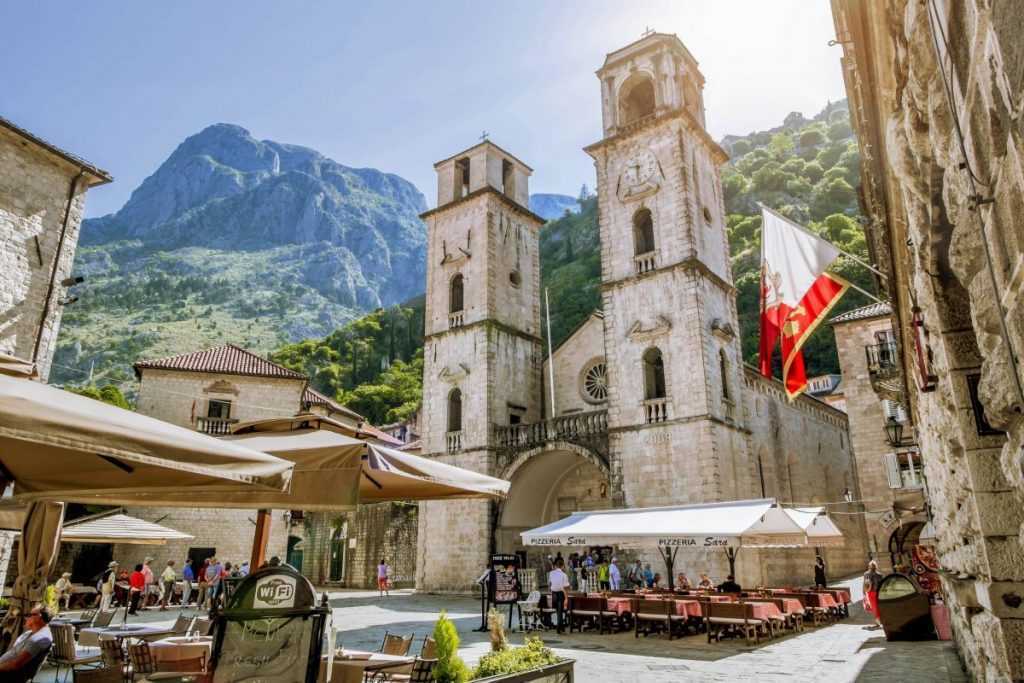
St. Ivan’s Fortress
St. Ivan’s Fortress or, as the locals call it, San Giovanni Castle is located above the old town of Kotor on a steep mountainside. Construction began in the 9th and ended in the 15th century. You will find the entrance behind the Marienkirche at the end of the alley. 1350 steps lead upwards. The castle was built 280 meters above sea level. The climb can be difficult, but there is an opportunity to rest along the way. A stop at the Church of Our Lady, which stands 100 meters above sea level and dates back to the 16th century.
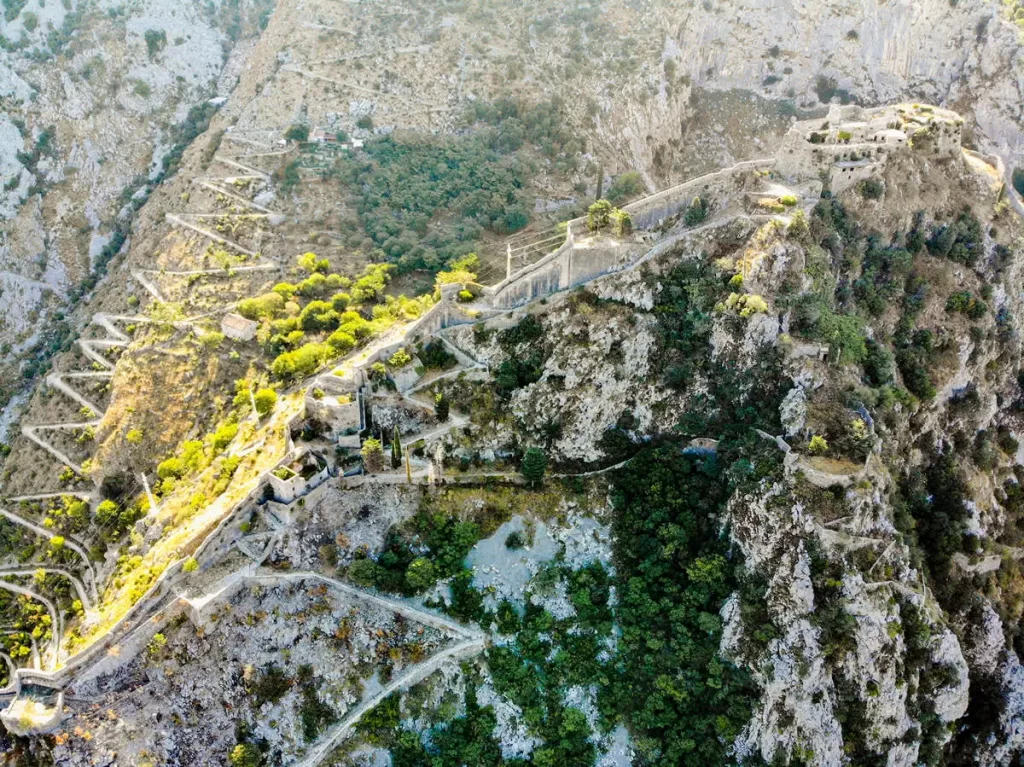
“Postcard” can be called three more settlements of Boka Kotorska – Risan, Perast and Prčanj. In the 18th century, rich villas were built here, gardens were planted, and temples were erected.
Perast
Perast was once part of different empires, but it was the Venetians who formed the outstanding architectural framework of the city. The Venetian Republic ruled these places from 1420 until 1797. During that time it made Perast a prosperous and wealthy part of its trading system. It had four active shipyards and a fleet of hundreds of ships, although Perast had a population of only about 1000. It soon became a city full of wealthy aristocrats, captains and shipowners. Today it’s a most romantic city in Kotor Bay.
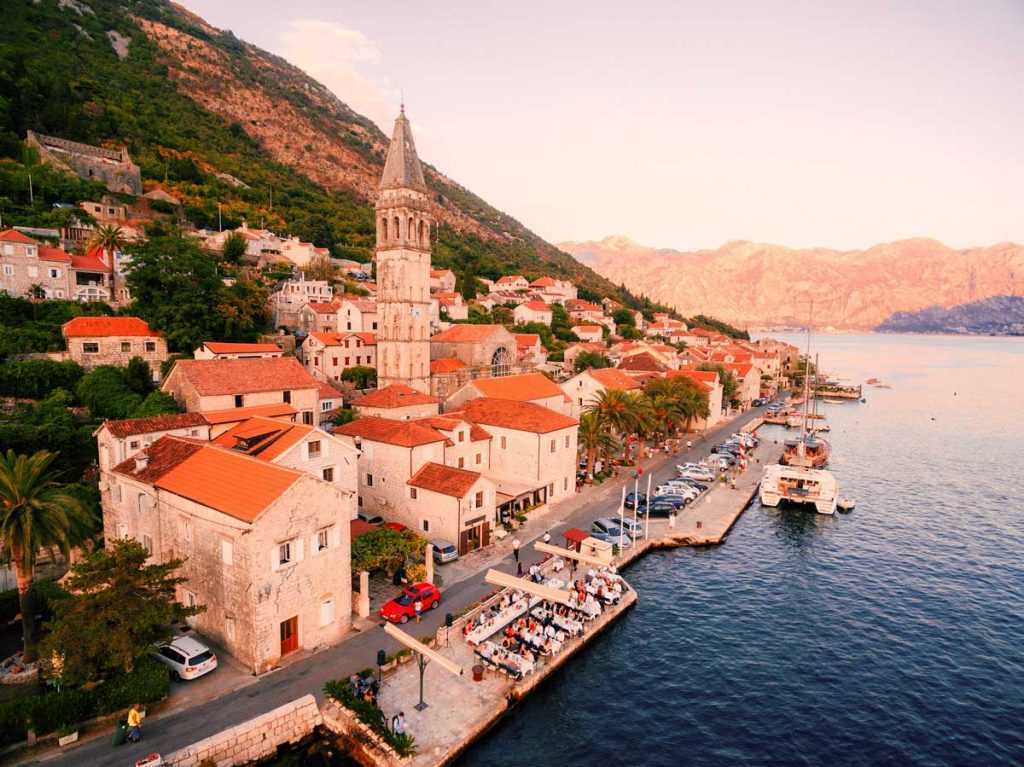
Of the many palaces of Perast built during the Venetian rule in the 17th century, 16 of the 20 still survive. Also survived 19 churches, 16 palaces and 9 defensive towers. The recognizable symbol of Perast is the Church of St. Nicholas (Sv. Nikola), whose bell tower rises proudly to a height of 55 m. The most impressive palace is the Bujović Palace, which now houses the City Museum. The rich museum collection includes antique furniture and household items, traditional clothes, paintings, as well as weapons and naval artifacts.
We will mention the most important of them. For example, the Bronza-Palast is a two-storey building, which is an excellent example of baroque architecture. The mansion of the Familie Smekja is located next to the church of St. Mark and has a beautiful view of the sea. It is the largest palace in Perast. The palace has been perfectly restored and turned into a luxurious five-star hotel. The beautifully restored house of the Zmajević dynasty, also known as the Bishop’s Palace or the Visković-Palast, is another house of the former noble family, which has not been used for a long time. The Palast Brajković-Martinović in the center of the city is noteworthy. Today it functions as a hotel and restaurant.
However, the main attractions of Perast, as well as the most famous postcard motif of the Bay of Kotor, are the 2 church islands, which are located on the shore of the fishing village. Island Gospa od Škrpjela (Our Lady of the Rocks) is a man-made mound of many stones with an intriguing legend. And the island Sveti Đorđe (St. Georg) is closed to visitors, because there is an active Benedictine monastery on the island. On the natural island there is another garden with cypress trees and a small cemetery, where the nobles of Perast are buried.
Prčanj
It is in an ideal location if you want to spend some time near Kotor, but prefer to avoid the hustle and bustle of the popular tourist town. From the streets and beaches of Prčanj you can admire the view of the nearby mountains – Lovćen and Orjen. Architecture of the town is of Italian origin, as Prčanj developed most during the Venetian rule. Many white-stone villas decorated with flowers and palm trees make the city romantic and dreamy. For a time the city was part of the Napoleonic Kingdom of Italy.
The oldest cultural monuments that have survived to this day are the Crkva Rođenja Blažene Djevice Marije u Prčnju (Church of the Nativity of the Blessed Virgin Mary), which was built over 120 years. It is one of the largest sacred sites in the Adriatic Sea and the largest in Boko-Kotor Bay.
This idyllic port town has a beautiful promenade, many charming little restaurants with terraces right on the water and plenty of benches to sit and enjoy the view. On Prčanj you can feel like you are in another century, strolling among the old stone houses, baroque churches and the remains of impressive old palaces
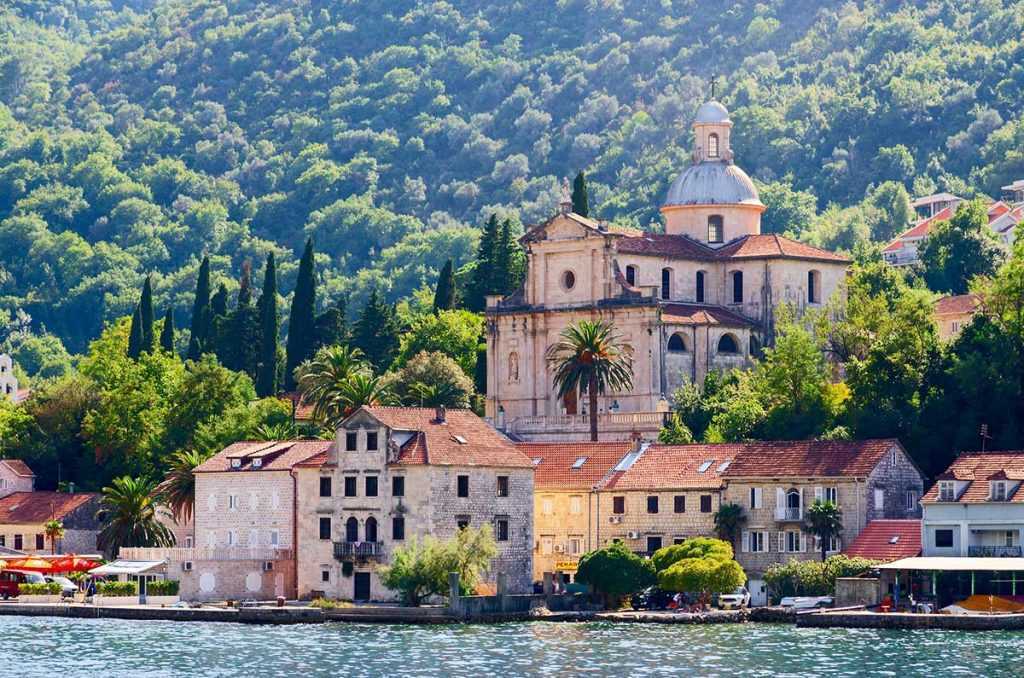
If you do not know where to stay in Kotor – you can use the search on our site. Select the option “Kotor” and click on “Search”.







